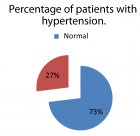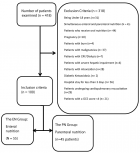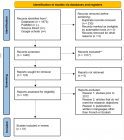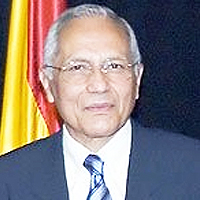Table of Contents
How does a Personalized Rehabilitative Model influence the Functional Response of Different Ankle Foot Orthoses in a Cohort of Patients Affected by Neurological Gait Pattern?
Published on: 30th August, 2017
OCLC Number/Unique Identifier: 7286344216
Background: Orthoses need to support physiotherapy as well as surgical treatment. Related to patient’s rehabilitative goals and pathological gait pattern, orthotists have to produce an orthoses that using an adjustable ankle joint system with preloaded disc springs can store the energy brought in by the body weight and produce a tuning effect on patient’s gait and sense of balance. The purpose of this study was to establish how a personalized proprioceptive individualized rehabilitative treatment could influence the functional response of different AFOs (Ankle Foot Orthoses) in a cohort of patients affected by neurological gait pattern.
Methods: Five patients affected by different neurological gait pattern and volunteered to participate to this study were recruited. The comparative spatio-temporal and functional effect on gait pattern of 3 types of AFOs was investigated under 4 study conditions: 1) without AFO or free-walk (FW); 2) wearing a Codivilla spring, 3) wearing a carbon unjointed AFO (“Toe-Off”); 4) wearing an innovative carbon-kevlar dynamic joint DAFO (DAFONS=Dynamic Ankle Foot Orthoses with Neuroswing). In line with our rehabilitative model, patients underwent to a weekly treatment session, 80 minutes duration per session, for 4 weeks. Evaluation was made before (time T3=time of recruitment) and after our individualized rehabilitative treatment course (time T4=1 month from T3) by using: a. G-Walk sensor (by BTS) spatio-temporal measures in different gait performances; b. clinical/functional outcome measures (Modified Ashworth Scale or MAS for the affected upper and lower limb; Medical Research Council or MRC; orthostatic stability evaluation by using the Berg Balance Scale or BBS).
Findings: A comparative analysis of clinical and instrumental data, performed in the pre-defined four investigational conditions, showed:
√ a statistical insignificant change of MRC and MAS scales at time T4, with a significance trend outcome observed at the same time by using the Wilcoxon Signed Rank Test
√ a statistical significant difference between test duration (sec) by using Toe-Off vs DAFONS and by using Codivilla spring vs Toe-Off
√ a statistical significant increase of the stride length on the left side (% cycle length) by using DAFONS compared to Toe-Off for patient P1, P3 and P5 with a parameter decrease by using DAFONS compared to Codivilla spring and Toe-Off use for patient P2
√ a statistical significant correlation between BBS trend and test duration (sec) by using Codivilla spring at time T3 and T4
√ a statistical significant correlation between the BBS trend and the double gait support duration on the right side (% cycle) with number of left step cycles by using DAFONS at time T3 and T4
√ in a comparative post-treatment visual gait analysis a modification of each patient’s static and dynamic postural assessment by using 3 different types of orthoses
Interpretation: In line with our study design we noted at the end of the proposed rehabilitative treatment an amelioration of gait quality with the use of DAFONS in all those patients (P1, P3 and P5) who showed a neurocognitive competence with a related functional grade of neurorehabilitative re-learning attitude of the physiological gait pattern and with a compromised perceptive control of gait and core stability. The proprioceptive profile of our rehabilitative program could promote the pro-adaptive and facilitation properties of a personalized gait control, induced by an innovative dynamic ankle foot orthoses with a modulable ankle joint system called Neuroswing. In the daily clinical practice, the personalized integration of a neurorehabilitative program and DAFONS can perform an individualized peripheral neuro-facilitation of gait cycle (peripheral perceptive facilitation), a neurorehabilitative re-learning process of physiological gait pattern (peripheral assisted neuroplasticity facilitation DAFONS induced) and an increase of patient’s motor abilities and quality of life in all daily performances.
First Metatarsal Stress Fracture of a pre-adolescent female Irish dancer with Medial Plantar Foot Pain: A Case Report
Published on: 17th July, 2017
OCLC Number/Unique Identifier: 7286423085
Background and Purpose: Injuries for the pre-adolescent female Irish Dancer (FID) are not well recognized. The purpose of this case study is to report imaging assisted diagnosis and management of atypical medial and plantar foot pain (MPFP) in an 8-year-old FID.
Description: The patient presented with chief complaint of diffuse left MPFP. The patient was initially evaluated by a Physical Therapist for persistent foot pain. The patient experienced minimal pain in non-weightbearing (NWB). Pain intensified in weightbearing (WB) escalating with a heel raise. The patient experienced pain with resistance testing, ankle passive range of motion (PROM) and first metatarsophalangeal joint (MTPJ) PROM. Diffuse tenderness with palpation over the medial column of the left foot was noted. The patient was unable to complete single leg dynamic activity on the left foot. There was suspicion for a metatarsal stress fracture (MSF). Radiographs were ordered and read as negative. The patient was treated with immobilization in a walking boot, WB as tolerated and relative rest including cessation of dance. The patient returned for re-evaluation 2 weeks after reporting no change in symptoms. Magnetic Resonance Imaging (MRI) was then ordered.
Outcome: Results of the MRI identified 2 stress fractures in the first metatarsal. The treatment plan changed to NWB status with immobilization for an additional 6 weeks. The patient returned to full WB status and participated in all dance activity 15 weeks after the initial presentation to the Physician and 27 weeks after the initial onset of MPFP.
Discussion/Conclusion: In this pre-adolescent FID, the presentation of MPFP can be misinterpreted as a soft tissue injury. It is important to consider the diagnosis of first MSF in a pre-adolescent FID to allow appropriate management.
Factors affecting muscle strength in cancer patients receiving chemotherapy
Published on: 10th July, 2017
This study aimed to investigate the relationship between muscle weakness and cancer-related symptoms in patients undergoing chemotherapy for hematological malignancies and solid tumors. We recruited hospitalized patients older than 20 years who were receiving chemotherapy. Patients were divided into a solid tumor (n=74) and hematological malignancy (n=80) group. Age, body mass index (BMI), strength and thickness of the quadriceps femoris muscle, serum albumin and C-reactive protein levels, blood hemoglobin concentration, fatigue, psychological distress and pain, and duration of hospitalization were assessed. Eight physical symptoms (fatigue, nausea and vomiting, pain, dyspnea, insomnia, appetite loss, constipation, and diarrhea) were also evaluated. Correlation and multiple regression analyses were conducted to identify factors affecting muscle strength in each group. Muscle strength was associated with fatigue in the solid tumor group and with age, BMI, muscle thickness, albumin and hemoglobin in the hematological malignancy group. Therefore, factors contributing to muscle strength might differ between patients with solid tumors and those with hematological malignancies. In particular, fatigue was an important factor in patients with solid tumors, while anemia was an important factor in patients with hematological malignancies. We therefore suggest that different treatments for muscle weakness might be considered for patients with these cancer types.
The effects of EMF (ELECTROMAGNETIC FIELDS) on the Bone and Cartilage Tissue
Published on: 1st May, 2017
OCLC Number/Unique Identifier: 7286356767
Environmental electromagnetic fields are nowadays available in all environments today. These areas affect the biological system. Controlled interactions with elecrtomagnetic fields can have positive effects when unrestricted interactions have negative effects. Uncontrolled exposure to low-frequency electromagnetic fields can cause adverse effects such as signal transduction in cells and tissues, cell membrane structure, ion channels, molecular interactions, DNA damage. But contrary to controlled exposure, it positively affects tissues. The most obvious example of this is seen in the bone and cartilaginous tissue. Repairing fractures and damage in bone and cartilage. This has been shown in many studies. Below is a summary of the relevant information.

If you are already a member of our network and need to keep track of any developments regarding a question you have already submitted, click "take me to my Query."


















































































































































